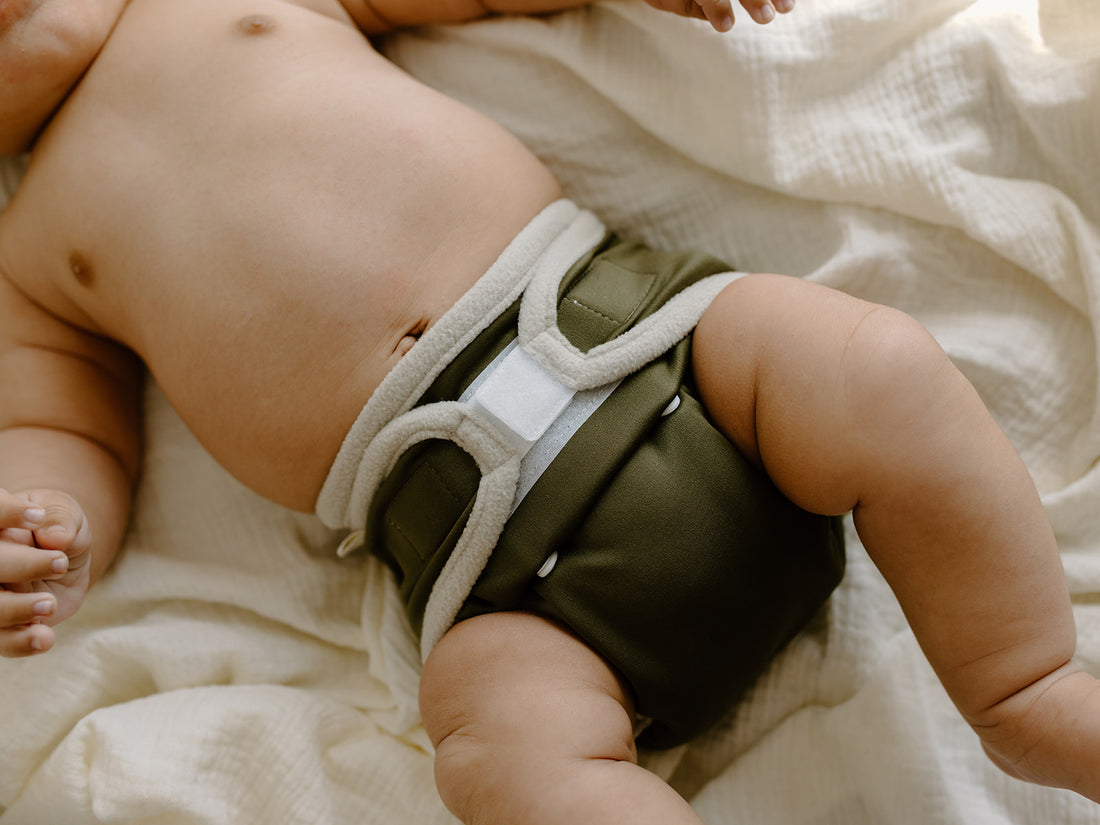Disposable nappies make money. A lot of money. One child goes through around 6000 of them in a diaper lifetime. They feel “cheap” to buy however over 3-4 years they will cost over R25 000. Two children will cost around R50 000. Nappy companies generate billions of rands.
They are advertised on TV, in every magazine, on all social media platforms. Your family and friends all expect you to use them. They are the mainstream product to use on your baby’s bum. Yet they often cause rashes, leak and all go to landfill (the “eco” ones too). Theses aspects are never broadcasted though. These things you find out only after using them. Still, they are mainstream. They are what we are used to seeing everyone use. They are the comparison to a the modern cloth nappy that is making an amazing come back since we now understand the dreadful consequences of single use plastics.
We do have a tendency to compare the size of a single use plastic to a chunkier cloth nappy. We can also be very quick to assume a baby cannot roll/move in a certain way because of a bigger nappy. This could not be further from the truth. Cloth babies are healthy and they all sit and roll over when it’s their time. Because babies all develop at their own rate, cloth nappy or not. Babies may appear to sit or roll over without a cloth nappy on more easily, but this doesn't mean the nappy is causing a "delay". Consider doing some more nappy free time as an option to using single use plastics.
Newborns who lie at a slight angle due to the bigger bum is also totally fine and nothing to worry about. Cloth diapers hold a baby's legs in the optimum position that aids healthy hip development, both by the bulk between the legs and also adding a lift of their spine, which encourages them to lie in a froggie type of position. When babies are in the womb they are all curled up. The hip ball and socket is not 100% formed and only fixes around 2- 3 years old. Sitting a small baby in a cloth diaper actually encourages them to hold their legs in a position where the hip ball sits in the socket, lessening the chance of hip dysplasia. How awesome? The same happens in a good baby carrier.
Something to think about too is that if cloth nappies really did cause developmental delays in any way, we would all know about it. Especially given the social media platforms available today. Your Pead would be giving the thumbs down to reusable nappies. You would have been warned very quickly not to go near a cloth nappy. There is not one bit of documented evidence to suggest that a thicker cloth nappy affects a child’s development or movement in a negative way. We must not forget that disposable nappies are only 20 years old. Our parents and maybe even you, grew up in terri towelling nappies- they are massive. Yet everyone developed and grew perfectly without any evidence to suggest otherwise. Disposable nappies are mainstream. Our views of what is “normal” have been obscured by the media. They make money. A lot of money. Everyone involved makes a lot of money.
Choosing cloth nappies can only reap rewards. They are healthy for hip development (as confirmed by many pediatricians) and used to treat hip dysplasia because of the perfect position the cloth nappy places a baby’s hips in. They are chemical free, so much more reliable in terms of blow outs and never leak if you have the right one. Cloth also provides a lovely soft landing when your baby starts to walk. They save a lot of money, can be resold or passed on to someone in need and don’t clog up the earth with poopy plastic. They are the best choice you can make in our current times. Yes the nappy is bigger but use your nappies every day to get used to how they feel and look and avoid comparing them to disposables. Make it your normal!

